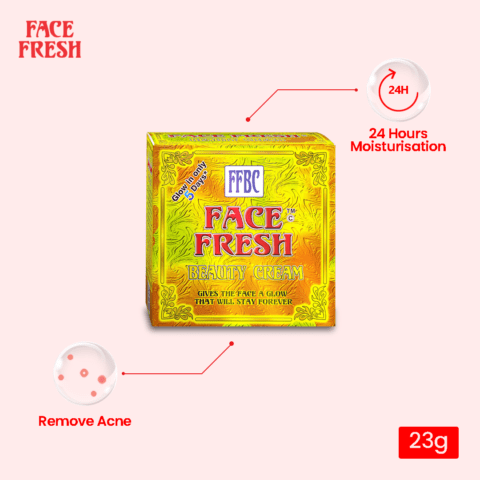Introduction
Have you ever experienced an adverse reaction to a skincare product or cosmetic? If so, you may have wondered why your skin reacted in such a way. The answer lies in the patch test of skin, a crucial procedure that helps identify potential allergies and sensitivities before using new products. In this comprehensive guide, we will delve into the world of patch testing, exploring its significance, process, and solutions. By the end, you’ll be equipped with the knowledge to protect your skin and make informed choices about the products you use.
Table of Contents
- What is a Patch Test?
- The Basics of Patch Testing
- Why is Patch Testing Important?
- Who Should Consider a Patch Test?
- How to Perform a Patch Test
- Step 1: Choose the Right Products
- Step 2: Prepare Your Skin
- Step 3: Apply the Patch
- Step 4: Observe and Monitor
- Step 5: Interpret the Results
- Common Allergens to Test For
- Fragrances and Perfumes
- Preservatives
- Dyes and Colorants
- Essential Oils
- Nickel and Metals
- Interpreting Patch Test Results
- Positive Reactions
- Irritant Reactions
- Allergic Reactions
- False Negatives and Positives
- Severity Grading
- Dealing with Patch Test Reactions
- Immediate Actions
- Calming the Skin
- Consulting a Dermatologist
- Adjusting Your Skincare Routine
- Preventing Patch Test Reactions
- Reading Product Labels
- Researching Ingredients
- Choosing Hypoallergenic Products
- Test Multiple Products at Once?
- Regular Retesting
- Frequently Asked Questions (FAQs)
- What is the purpose of a patch test?
- How long should I leave the patch on during a test?
- Can I perform a patch test on sensitive skin?
- Are there any risks associated with patch testing?
- Can I do a patch test for makeup products?
- Is patch testing only for individuals with allergies?
- Conclusion
What is a Patch Test?
The Basics of Patch Testing
A patch test is a diagnostic tool used to identify allergic reactions and sensitivities to specific substances. It involves applying small amounts of various substances to the skin, typically on the back, and observing the skin’s reaction over a specific period. This test is non-invasive and provides valuable information about an individual’s skin sensitivities.
Why is Patch Testing Important?
Patch testing is crucial because it helps identify potential allergies and sensitivities before using products on a larger area of the body. It allows individuals to make informed decisions about the products they use and helps prevent adverse reactions that can cause discomfort, skin damage, or even severe allergic responses.
Who Should Consider a Patch Test?
Patch testing is recommended for individuals who have experienced adverse reactions to skincare products, cosmetics, hair dyes, or other substances applied to the skin. It is particularly important for those with a history of sensitive skin, eczema, dermatitis, or known allergies. If you fall into any of these categories, a patch test can provide valuable insights into which ingredients or substances to avoid.
How to Perform a Patch Test
Performing a patch test correctly is crucial to obtaining accurate results. Follow these steps to conduct a patch test effectively:
Step 1: Choose the Right Products
Select the products you wish to test for potential skin reactions. This can include skincare products, cosmetics, hair dyes, or any other substances you regularly apply to your skin. Ensure you have separate patches for each product to avoid cross-contamination.
Step 2: Prepare Your Skin
Cleanse a small area of skin, preferably on your upper back, using a mild soap or cleanser. Pat the area dry gently. Avoid using any skincare products, lotions, or creams on the patch test area for at least 24 hours before the test.
Step 3: Apply the Patch
Apply a small amount of the product you want to test onto a patch. Secure the patch onto the designated area of the skin. It’s advisable to use hypoallergenic adhesive tape or specialized patch test kits, which can be obtained from a dermatologist.
Step 4: Observe and Monitor
Leave the patch on for the recommended duration, usually 24 to 48 hours. During this time, avoid exposing the patch to excessive moisture or physical activities that may dislodge it. Keep a record of any itching, redness, swelling, or discomfort experienced during the observation period.
Step 5: Interpret the Results
After the recommended observation period, carefully remove the patch. Examine the test area for any signs of a reaction, such as redness, inflammation, blisters, or other changes. Compare the test area to a control area where no product was applied. Interpret the results based on the specific guidelines provided by your dermatologist or the product manufacturer.
Common Allergens to Test For
During a patch test, certain allergens are commonly tested to identify potential sensitivities. Here are some of the most frequently tested allergens:
Fragrances and Perfumes
Fragrances and perfumes are known to cause allergic reactions in many individuals. The complex mix of ingredients in fragrances can include potential irritants and allergens. Patch testing can help determine if you have any specific fragrance allergies.
Preservatives
Preservatives are added to skincare products and cosmetics to extend their shelf life and prevent bacterial growth. However, some preservatives can cause allergic reactions in certain individuals. Patch testing can identify if you have sensitivities to common preservatives like parabens or formaldehyde-releasing agents.
Dyes and Colorants
Dyes and colorants are commonly used in cosmetics and hair dyes to enhance appearance. However, some dyes can cause contact dermatitis or allergic reactions. Patch testing can help identify if you have sensitivities to specific dyes or colorants.
Essential Oils
Essential oils, derived from plants, are used in various skincare products for their aromatic and therapeutic properties. However, some essential oils can cause skin irritation or allergic reactions in sensitive individuals. Patch testing can help determine if you have sensitivities to specific essential oils.
Nickel and Metals
Nickel and other metals are often used in jewelry, belt buckles, and clothing accessories. They can cause allergic reactions in individuals with nickel allergies, resulting in contact dermatitis. Patch testing can help identify if you have sensitivities to nickel or other metals commonly found in everyday objects.
These are just a few examples of common allergens that can be tested through a patch test. Your dermatologist may recommend additional allergens based on your specific circumstances and suspected sensitivities.
Interpreting Patch Test Results
Interpreting patch test results requires careful observation and analysis. Here are the key types of reactions and their interpretations:
Positive Reactions
A positive reaction occurs when a specific allergen causes a noticeable reaction on the patch test area. This reaction may include redness, swelling, inflammation, or the development of blisters. A positive reaction suggests an allergy or sensitivity to the tested substance.
Irritant Reactions
Irritant reactions are non-allergic responses to a substance. They occur when the patch test area becomes red, inflamed, or irritated due to the product’s direct effect on the skin. Irritant reactions are not indicative of an allergy and may result from factors such as high concentration, prolonged exposure, or skin barrier impairment.
Allergic Reactions
Allergic reactions occur when the immune system reacts to an allergen present in the patch test area. These reactions are characterized by redness, inflammation, itching, swelling, or the development of blisters. Allergic reactions indicate a specific allergy to the tested substance.
False Negatives and Positives
Patch tests are highly accurate but can occasionally yield false negatives or positives. A false negative occurs when an allergy or sensitivity is present, but the patch test fails to detect it. This can happen due to factors like low concentration of the allergen or individual variations in sensitivity. A false positive occurs when the patch test shows a reaction, but the substance does not cause any symptoms when used in real-life scenarios.
Severity Grading
Based on the intensity and extent of the reaction, patch test results are often graded. Severity grading helps determine the significance of the reaction and guides further recommendations. Grading systems may vary, but they generally include categories such as mild, moderate, and severe reactions.
Always consult a dermatologist or healthcare professional to interpret your patch test results accurately. They will provide personalized guidance based on your specific sensitivities and allergies.
Dealing with Patch Test Reactions
Encountering a reaction during a patch test can be distressing, but there are steps you can take to manage and alleviate the symptoms. Here’s what you can do:
Immediate Actions
If you experience discomfort or itching during the patch test, refrain from scratching or rubbing the area, as this can worsen the reaction. Instead, gently cleanse the area with mild soap and cool water. Pat the area dry using a soft towel. Applying a cold compress or an over-the-counter hydrocortisone cream can help reduce itching and inflammation.
Calming the Skin
After removing the patch, it’s important to calm and soothe the skin to promote healing. Avoid applying any potential irritants to the affected area. Instead, opt for gentle skincare products specifically formulated for sensitive or reactive skin. Look for ingredients like aloe vera, chamomile, or colloidal oatmeal, known for their calming properties.
Consulting a Dermatologist
If you experience a severe or persistent reaction during a patch test, it’s essential to seek professional guidance. Schedule an appointment with a dermatologist to discuss your symptoms and test results. A dermatologist can provide an accurate diagnosis, recommend appropriate treatments, and help you navigate potential allergens in skincare and cosmetic products.
Adjusting Your Skincare Routine
If you discover specific allergies or sensitivities through patch testing, it’s important to adjust your skincare routine accordingly. Avoid products that contain the identified allergens or irritants. Look for hypoallergenic, fragrance-free, and gentle formulations that are less likely to cause reactions. Remember to patch test any new products before incorporating them into your routine.
Preventing Patch Test Reactions
While patch testing helps identify potential allergies and sensitivities, preventing reactions in the first place is equally important. Here are some preventive measures you can take:
Reading Product Labels
Carefully read the labels of skincare products, cosmetics, and hair dyes before purchasing or using them. Look for ingredients that you know you are allergic to or have previously reacted to. Avoid products that contain these ingredients to minimize the risk of a patch test reaction.
Researching Ingredients
Educate yourself about common allergens and irritants found in skincare and cosmetic products. Learn to identify them on ingredient lists. Research reputable sources or consult a dermatologist to understand potential risks associated with specific ingredients.
Choosing Hypoallergenic Products
Opt for hypoallergenic products whenever possible. These products are formulated to minimize the risk of allergic reactions and skin sensitivities. However, it’s important to note that the term “hypoallergenic” is not regulated and can vary in meaning from one brand to another.
Test Multiple Products at Once?
When performing a patch test, it’s generally recommended to test one product at a time. This allows you to pinpoint the specific cause of a reaction if it occurs. Testing multiple products simultaneously can make it difficult to identify the exact allergen or irritant responsible for a reaction.
Regular Retesting
Allergies and sensitivities can develop or change over time. It’s advisable to periodically retest products, especially if you have experienced reactions in the past. Retesting helps ensure that your skincare routine remains suitable for your skin’s evolving needs.
By implementing these preventive measures, you can minimize the risk of patch test reactions and make more informed choices about the products you use on your skin.



Leave a comment
Your email address will not be published. Required fields are marked *